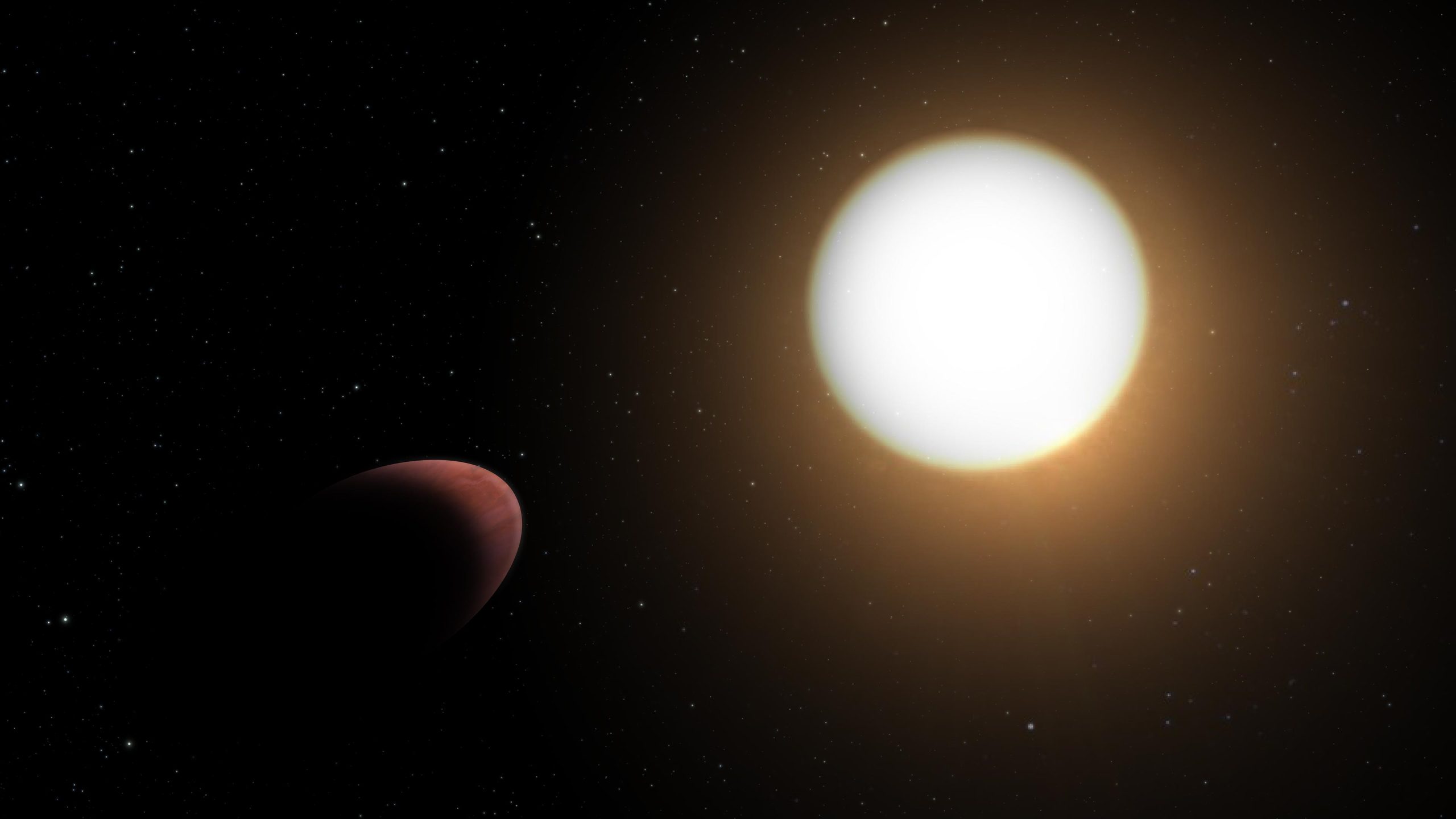
This is the first time that the deformation of an exoplanet has been detected, offering new insights into the internal structure of these star-hugging planets.
The planet, known as WASP-103b is located in the constellation of Hercules.It has been deformed by the strong tidal forces between the planet and its host star WASP-103, which is about 200 degrees hotter and 1.7 times larger than the Sun.
The same cannot be said for WASP-103b, a planet almost twice the size of Jupiter with 1.5 times its mass, orbiting its host star in less than a day.
Cheops reveals a rugby ball-shaped exoplanet.Using new data from ESA’s Cheops space telescope, combined with data that had already been obtained by the NASA/ESA Hubble Space Telescope and NASA’s Spitzer Space Telescope, astronomers have now been able to detect how tidal forces deform exoplanet WASP-103b from a usual sphere into a rugby ball shape.Cheops measures exoplanet transits – the dip in light caused when a planet passes in front of its star from our point of view.Ordinarily, studying the shape of the light curve will reveal details about the planet such as its size.
The high precision of Cheops together with its pointing flexibility, which enables the satellite to return to a target and to observe multiple transits, has allowed astronomers to detect the minute signal of the tidal deformation of WASP-103b.
This distinct signature can be used to unveil even more about the planet.
The team was able to use the transit light curve of WASP-103b to derive a parameter – the Love number – that measures how mass is distributed within a planet.Understanding how mass is distributed can reveal details on the internal structure of the planet.
The Love number for WASP-103b is similar to Jupiter, which tentatively suggests that the internal structure is similar, despite WASP-103b having twice the radius.“In principle we would expect a planet with 1.5 times the mass of the Jupiter to be roughly the same size, so WASP-103b must be very inflated due to heating from its star and maybe other mechanisms,” says Susana.“If we can confirm the details of its internal structure with future observations maybe we could better understand what makes it so inflated.Knowing the size of the core of this exoplanet will also be important to better understand how it formed.”.
The extremely high precision of Webb will improve the measurements of tidal deformation of exoplanets, enabling a better comparison between these so-called “hot Jupiters” and giant planets in the Solar System.
The tidal interactions between a star and a very close-in Jupiter-sized planet would usually cause the planet’s orbital period to shorten, bringing it gradually closer to the star before it is eventually engulfed by the parent star.
However, measurements of WASP-103b seem to indicate that the orbital period might be increasing and that the planet is drifting slowly away from the starC
This would indicate that something other than tidal forces is the dominant factor affecting this planet.
Susana and her colleagues looked at other potential scenarios, such as a companion star to the host affecting the dynamics of the system or the orbit of the planet being slightly ellipticalCIt is also possible that the orbital period is actually decreasing, rather than increasing, but only additional observations of the transits of WASP-103b with Cheops and other telescopes will help shed light on this mystery.
“The size of the effect of tidal deformation on an exoplanet transit light curve is very small, but thanks to the very high precision of Cheops we are able to see this for the first time,” says ESA’s Project Scientist for Cheops, Kate Isaak.“This study is an excellent example of the very diverse questions that exoplanet scientists are able to tackle with Cheops, illustrating the importance of this flexible follow-up mission.”.
Reference: “Detection of the tidal deformation of WASP-103b at 3 σ with CHEOPS” by SMJanuary 16, 2022AJanuary 16, 2022.January 16, 2022.January 16, 2022.January 16, 2022.January 16, 2022.